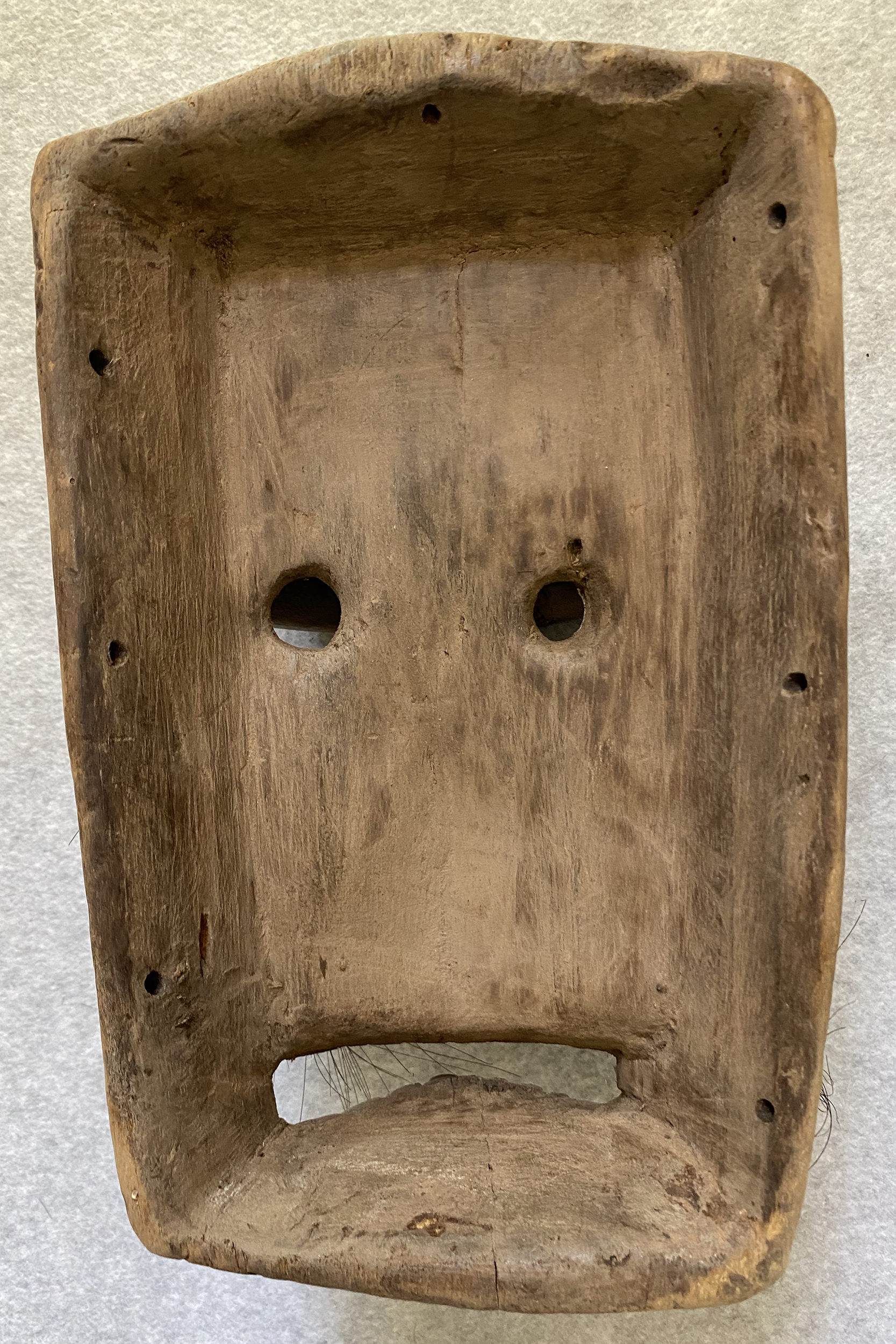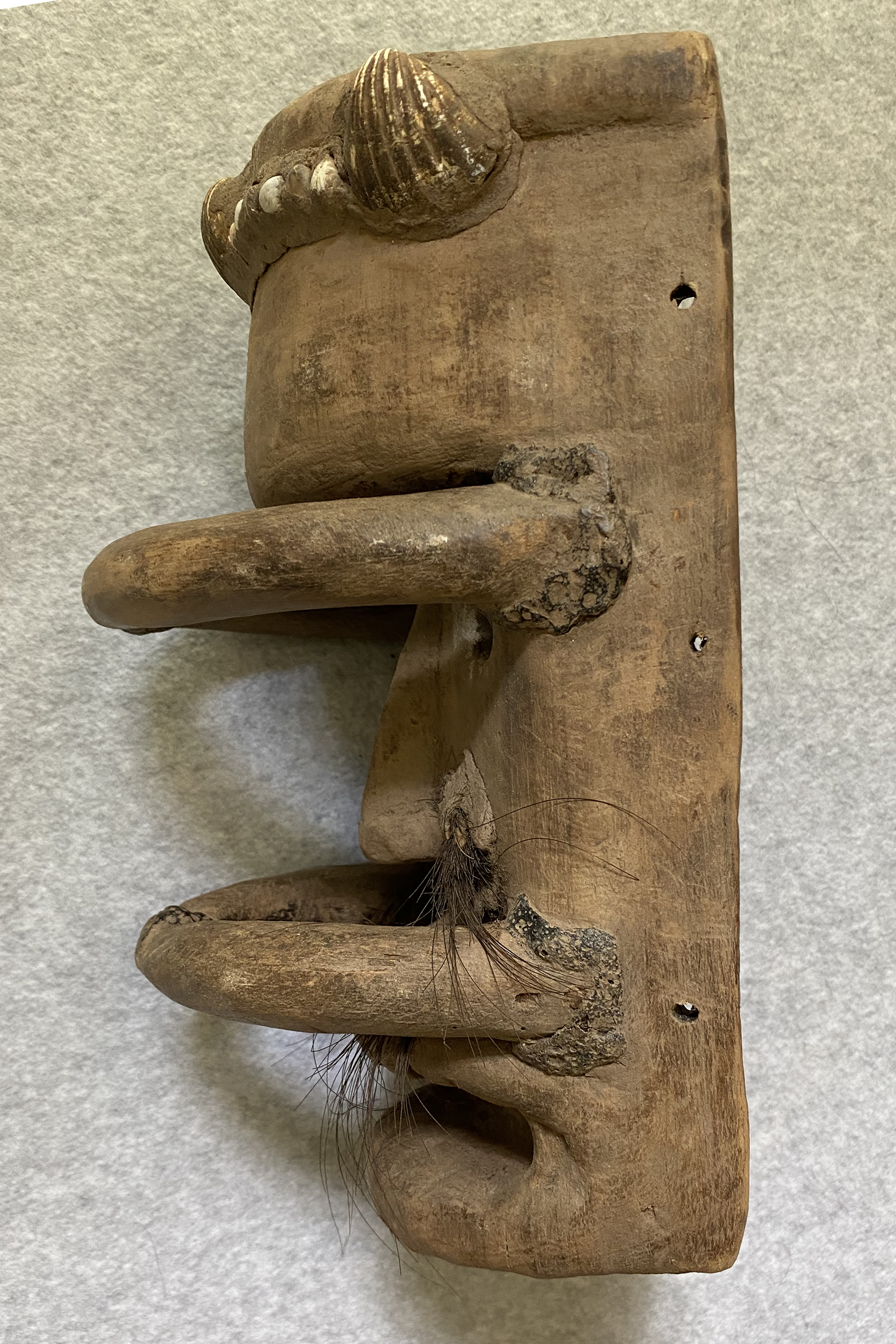Krahn Tribal Mask
- African Art Collection
- This ancient Krahn mask made of wood, with stones and shells imbedded into the forehead has large eyes and two curved bars in front of the face. The mustache and hair protruding from the mouth appears to be chimpanzee. The wood appears to be in its natural state with no outside pigment. Except for the suspected repair to the facial bars, the mask remains in good condition.
- GEOGRAPHY / CULTURE GROUP: Liberia, Krahn. The Krahn people, also known as Kran, of Liberia and Cote d’ Ivoire are believed to have arrived in Liberia in the 16th century. Originally concentrated in Grand Gedeh County, the Krahn numbered about 250,000 in 1970. The Krahn who practiced an animist type of religion were known as farmers and traders. The communities were loosely organized and governed by a chief. During and after the Liberian civil conflict of the 1980s and 90s, many Krahn fled their ancestral homes for Ivory Coast and Monrovia. Today, less than 100,000 individuals in Liberia attest to being Krahn. Few speak the language, and can describe Krahn cultural traditions.
-
Krahn
Liberia
Read Biography
Krahn
GEOGRAPHY / CULTURE GROUP: Liberia, Krahn. The Krahn people, also known as Kran, of Liberia and Cote d’ Ivoire are believed to have arrived in Liberia in the 16th century. Originally concentrated in Grand Gedeh County, the Krahn numbered about 250,000 in 1970. The Krahn who practiced an animist type of religion were known as farmers and traders. The communities were loosely organized and governed by a chief. During and after the Liberian civil conflict of the 1980s and 90s, many Krahn fled their ancestral homes for Ivory Coast and Monrovia. Today, less than 100,000 individuals in Liberia attest to being Krahn. Few speak the language, and can describe Krahn cultural traditions.
- No
- Krahn
- Liberia
- Wood, stones, chimpanzee hide, shells
- Mask
- 2022.01.053
- May 2022
- Reginald and Celeste Hodges
- May 2022



